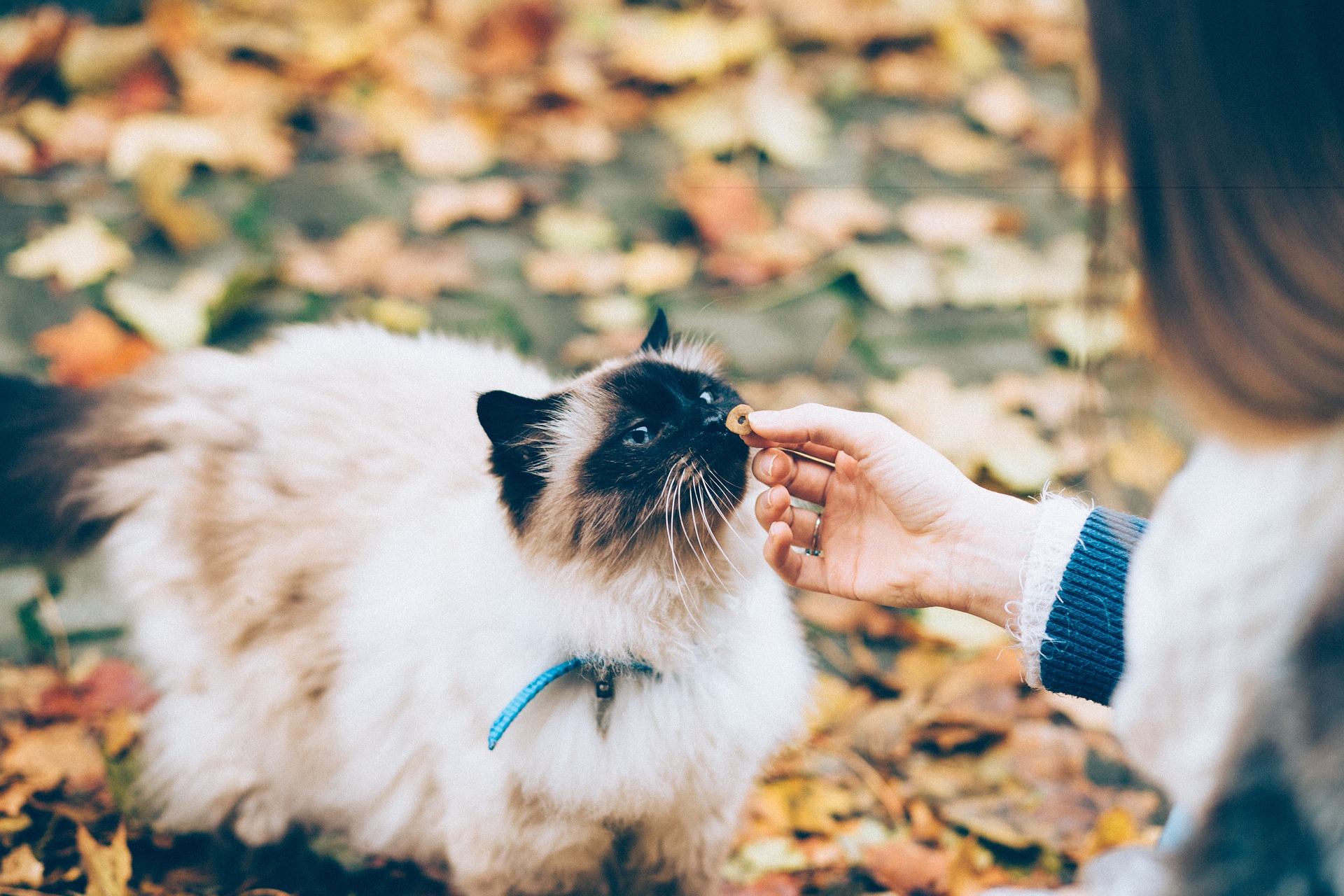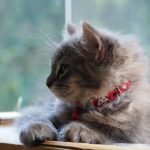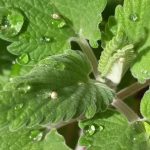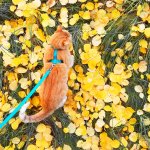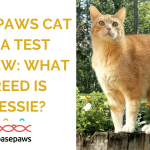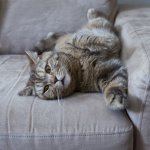Dry Cat Food and FLUTD: Dry Food Gave My Cat a UTI
Last Updated on
My cat was the perfect candidate for urinary tract disease. He ate dry cat food.
One morning, life with my young, healthy red tabby transformed. A peaceful morning turned into a nightmare.
It started with him straining in the litter box. At first, it seemed inconsequential. Then he strained some more.
For hours, he strained, again and again, turning in the litter box, hopping out, hopping in. He meowed and struggled. He created quarter-sized puddles in the litter box.
Watching his frustration and pain was terrifying.
Feline lower urinary tract disease came out of nowhere. It seemed to have materialized in an instant.
In most cases, however, that’s not the way it works. Urinary tract disease is the result of systemic problems.
Following his recovery, fear-fueled research discovered solutions that I credit with the last seven years of FLUTD-free life.
This terrifying encounter with urinary tract disease forced us to look for answers. It quickly became evident that the answer wasn’t really pH control or cranberry supplements. It was hydration. We switched him off of the dry food onto a moist alternative, he’s not had a problem in the seven years since. And yes, I’m grateful for his health every time he successfully urinates.
I’m going to propose, as have many of the most respected veterinarians and experts in the field, that it’s not minerals or pH that are our number one problem.
We don’t have a formula problem. We have a water problem.
In terms of urinary tract health benefits, the cheapest moist food is better than any prescription dry food.
The secret is respecting our cats’ wild desert heritage. Instead of trying to pack them into convenient schedules and diets that are comfortable for us, why don’t we think more about what our cats were designed for? Our cats don’t force us to eat raw meat and if they did, we would be coming down with diseases and suffering for it. Of course, humans are different from cats. They have busy schedules and a constant need for convenience. They have wars.
World War II necessitated the development of dry food. And at first it looked like a beautiful development – scientifically-formulated, nutritionally-complete, and it supported the war effort by freeing up metal production to support World War II. And yet, over the course of the last seventy years, we’ve seen what happens when we try to pack our cats into convenient dietary molds.
Take it from Lisa Pierson, DVM:
To be quite frank, if humans – including many of my veterinary colleagues – had a cork inserted into their urethra until they experienced the excruciating pain secondary to bladder distension and rupture, I have no doubt that they would start to take this issue much more seriously and STOP condoning the feeding of dry food to cats.
Cats evolved in the desert, where it was impossible for them to drink the amounts of water necessary to sustain life. Their thirst drives became accordingly low and they became accustomed to consuming most of their water in the form of moisture-rich animal prey. Instead of drinking from a dish, they consumed water-packed mice and rabbits. The animals these wild cats consumed had about 70% water content. Compare that to dry food, which is approximately 10% water.
What happens when you take an animal designed, not to drink large amounts of water from a ceramic bowl, but to consume fresh, water-packed prey, and start feeding them a diet of crunchy food made specifically for its minimal moisture content?
That animal becomes almost as dehydrated as the food they eat.
Except it’s not convenient for your cat to be dehydrated. While dry food may seem cheap, medical bills aren’t.
The procedures involved in treating a blocked cat can enter the thousands of dollars. While feeding your cat a bowl of kibble may seem simple, it’s not easy to watch your cat straining out a few droplets of bloody urine while mewing pitifully.
And the quality of the dry food is irrelevant. You could purchase a high-quality dried food like Orijen or Acana, made from a rich concentration of animal proteins, no grains, and minimal concentrations of all the fruits and vegetables we know our cats don’t need.
As great as the ingredients of these foods may be, that doesn’t change the glaring fact of the situation: the food is dry. It makes your cat’s system dry. This isn’t a conversation about carbs, grains, or protein content. While these things are important considerations, there’s little evidence that they have any bearing on your cat’s chances of developing urinary tract disease. It’s all about water.
As we become more aware of the effect dry food has on our cats, the more irresponsible it is to feed them kibble.
Is a high-moisture diet the only way to prevent urinary tract disease?
I’m not going to claim that all feline urinary tract disease is absolutely caused by dry food consumption. You can’t make that type of a claim – there are always variations, exceptions to every rule.
Studies have revealed some other risk factors: male cats, younger cats, living indoors, stress, and being overweight.
How many of these traits are connected to dry food? How many of these risk factors are controllable?
We still don’t have the answers to these important questions, but we do know one thing – unequivocally – and it’s that dry food belongs in the trash, not in your cat’s bowl.
Instead of feeding your cat dry cat food, keep them hydrated. Here are a few ways to add water to your cat’s diet:
Switch to canned, raw, or homemade cat food.
By making the switch from kibble to a high-moisture food, you (almost) effortlessly give your cat all the moisture they need.
As we mentioned before, dry cat food is a popular option among budget-conscious people. If you’ve been feeding your cat dry food for monetary reasons, don’t worry—the cheapest wet food is still better than the most expensive dry food and a lot more economical than the money you might spend on treatment for FLUTD.
Invest in a cat water fountain.
A cat who eats dry food and drinks from a water fountain is still worse off than a cat who eats a high-moisture food, but if you can get your cat onto a high-moisture diet and drinking from a water fountain, they’ll be better-hydrated than any other feline you know.
Why are water fountains better than traditional bowls? Because they tap into your cat’s natural instincts. Cats don’t want to drink from a stagnant pool. They’re attracted to water that moves because it’s typically fresher and safer for them to drink. Besides tasting better, water from a fountain appeals to your cat’s curiosity. If your cat likes to watch and drink from water from the faucet, they’ll appreciate a dedicated drinking fountain.
The Miaustore ceramic water fountain appeals to your cat’s curious nature with 8 different drinking areas, including 4 easy-flowing bodies of water, 3 mini waterfalls, and a bubbling spring.
Feed broths and stews.
Complement your cat’s usual diet with bone broth, a nutrient-rich brew made from slow-cooked bones. In addition to keeping your cat hydrated, bone broth has anti-inflammatory properties, which could reduce their risk of FLUTD.
You might also consider feeding your cat liquidy meals. We usually add warm water to every wet meal, turning it into something like a hot stew. If you prefer, you can opt for premade stews like Caru’s boxed stews for cats.

